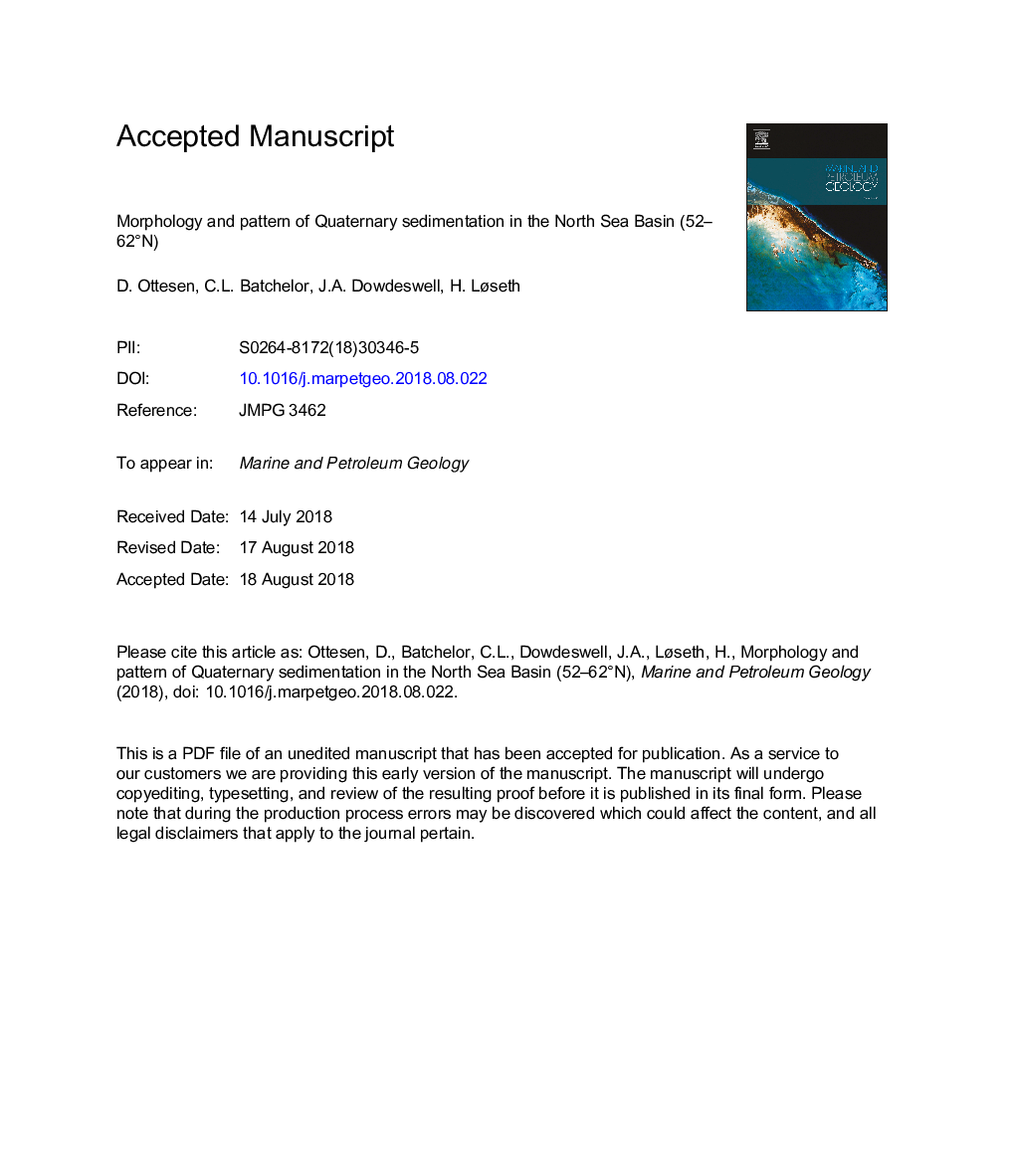| Article ID | Journal | Published Year | Pages | File Type |
|---|---|---|---|---|
| 11033106 | Marine and Petroleum Geology | 2018 | 61 Pages |
Abstract
The Quaternary North Sea Basin, which extends from northwest mainland Europe in the south (52°N) to the Norwegian Sea in the north (62°N), contains a thick (up to 1â¯km) sedimentary succession that records the changing nature of sediment supply from surrounding land areas during the last c.2.6 Ma. We use an extensive 2D and 3D seismic database to correlate major Quaternary seismo-stratigraphic surfaces and units across the North Sea and reconstruct the broad-scale infill pattern of the entire Quaternary North Sea Basin. The total volume of Quaternary sediments in the North Sea (350â¯000â¯km2) is c.140â¯000â¯km3, while the area inside the 500â¯m contour of the base-Quaternary surface has a volume of 109â¯000â¯km3. Two largely independent depocentres developed in the North Sea Basin during the early Quaternary: the southern and central sub-basin was infilled by shelf fluvio-deltaic and prodeltaic sediments delivered from the east and south-east, whilst the northern sub-basin was infilled mainly by prograding glacigenic debris-flows deposited from an ice mass centred on the Norwegian mainland. Contour currents were an important mechanism of sediment deposition and reworking, with water circulation in the basin probably occurring in an anti-clockwise direction. Whilst most of the southern North Sea Basin was infilled by around 1.6-1.7 Ma, a depression persisted in the central North Sea until around 1 Ma. The analysis of landforms on 3D seismic data suggests that the Fennoscandian Ice Sheet (FIS) extended intermittently to the palaeo-shelf break in the northern North Sea during the earliest Quaternary and expanded into the central North Sea prior to the excavation of the Norwegian Channel.
Related Topics
Physical Sciences and Engineering
Earth and Planetary Sciences
Economic Geology
Authors
D. Ottesen, C.L. Batchelor, J.A. Dowdeswell, H. Løseth,
